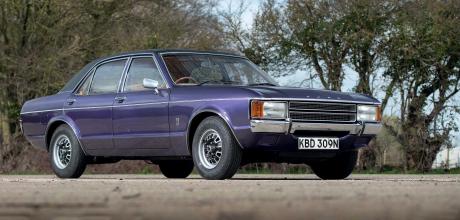1975 Ford Consul 2000L Decor
Ford Heritage: When Rod Tebble found this 1975 Ford Consul 2000L Decor sitting unused in a garage he didn’t expect it to be such an original and unmolested example…
Words Mike Renaut
Photos Adrian Brannan
CONSULL DÉCOR
HERITAGE: Consul L Décor — Seventies executive rarity breaks cover.
There tend to be two types of Granada owner; the ones who race them around oval tracks on a Sunday afternoon, and the ones who instead spend their weekend restoring the cars back to perfect condition. Rod Tebble is one of the latter, “Though I’ve nothing against banger racers,” says Rod, “I’ve known a few over the years and bought parts from them. They’re mostly a good bunch of lads.” But Rod is very much a restorer and he’s applied his talents to this 1975 Consul 2000L Decor. “I’ve had Granadas all my life and used them as dailies in the 1980s and 1990s when they were £25 each. I’ve driven company cars and my wife’s cars, but Granadas are all I’ve actually owned. The Ford Granada Mk1 & Mk2 Drivers’ Guild heard this low-mileage Consul was for sale and put me in touch with the owner and his daughter, so I went over for a look in September 2017.”
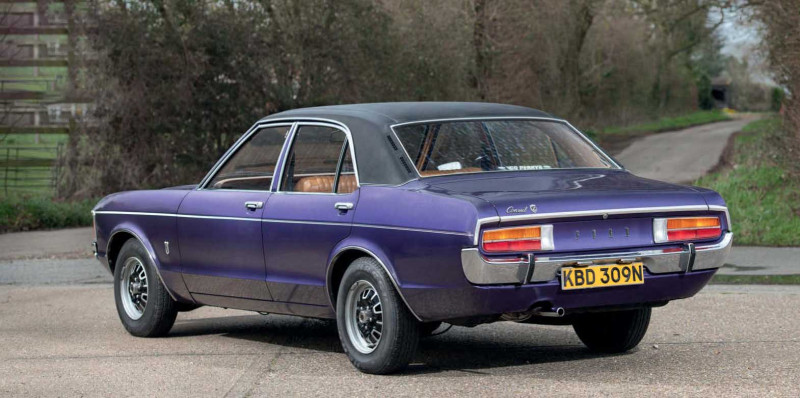
Rod was surprised just how low the mileage was. “The Consul showed just 14,900 on the clock. The owner had worked for Sir Robert McAlpine Ltd and had it brand-new as his company car through Perry’s — the local Ford dealer in Bletchley. In 1978 when it was three years old he bought the Consul from McAlpine’s. Since he only used it to drive to the railway station and catch the train into London it hadn’t had much use. In fact since the station was barely half a mile from his house the car only had its first 6000 miles service in March 1979 when it was four years old.
“THE CAR WAS ORDERED WITH PURPLE VELVET PAINT, WHICH WAS A FAIRLY UNUSUAL CHOICE FOR A CONSUL”
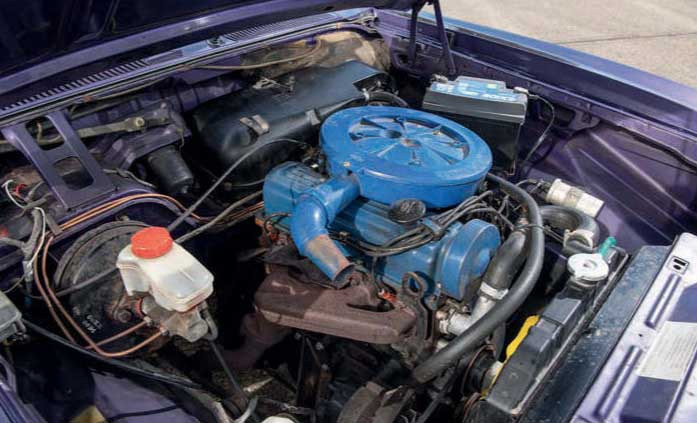
“When I bought the Consul it came with every MoT and that confirmed the mileage as genuine. It was specified in Purple Velvet paint which was a fairly unusual choice for a Consul — you generally saw it on the Escort 1300E — and was ordered with a black vinyl roof. Apparently, when the car arrived at Perry’s the roof was painted metal, so the dealer installed the vinyl top themselves — that’s why it doesn’t continue underneath the rear window like it would on a factory one.”
Old rubber
“When I got the Consul it was still sat on the original tyres and the spare had never been fitted,” continues Rod. “The gentleman selling the car stopped driving it after the MoT expired in June of 1990. The car had simply been shut off and left so it was coated in dust — they hadn’t done anything to protect it, just parked it and locked the garage.
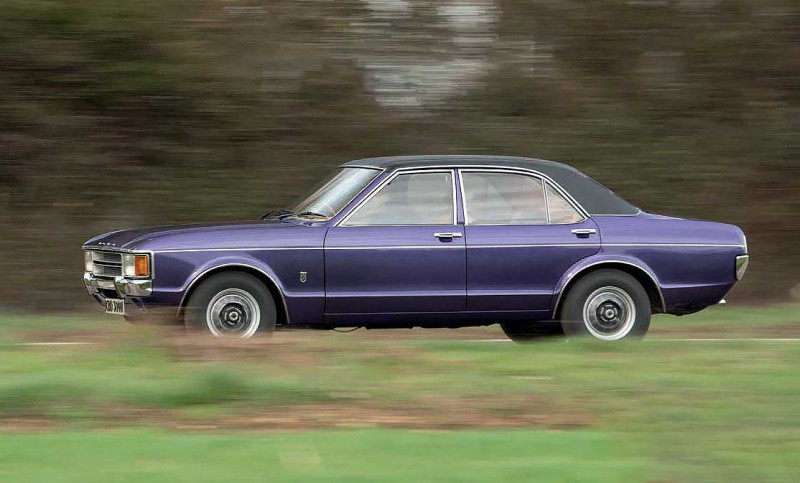
“I went back the following week and freed off the seized brakes. After trailering the Consul home the first job was to change the oil. With some fettling, fresh petrol plus a set of new points and condenser I had the engine running within three-quarters of an hour…”
But don’t think this was a case of then simply jumping into the Consul and taking it straight to the nearest car show.
“It ran OK but the camshaft was singing like a noisy canary,” laughs Rod, “so I knew I’d be doing some top-end engine work. The oil was up to the cam top spray bar. Only being used for short journeys meant the engine was rarely run up to temperature, so it may have only had 14,000 miles on it, but that camshaft was knackered!”
The engine received a new camshaft, spray bar and cambelt, along with new valve stem seals, while the water pump, thermostat housing and thermostat, condenser, fan belt, hoses, fuel pump, water pump and plugs were all replaced.
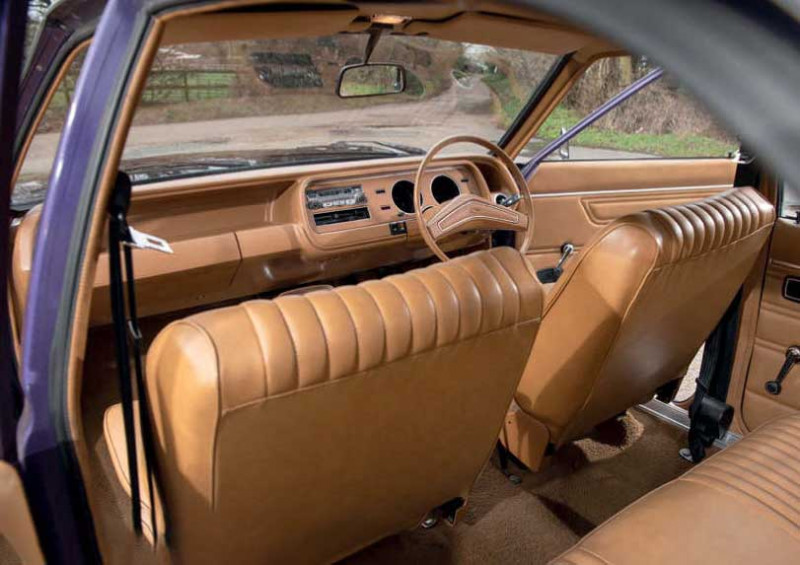
“The cooling system needed flushing through several times to get rid of the sediment. I also cleaned the carburettor, reconditioned the radiator and the heater, fitted new brake pipes all round along with reconditioned callipers, plus a new nylon bush for the gearlever and a new exhaust.”
The interior just needed a really good scrub to get rid of some marks, but under the dirt even the carpet was in great condition.
“One wheelarch trim was replaced, as were two of the overriders. Though I might replace the rear bumper in the future since it’s got a couple of marks.”
Self preservation
“I was tempted to do a full nut-and-bolt restoration,” admits Rod, “but in the end I settled for just doing whatever the car needed.” That included a tiny rust repair to the top and base of one A-post, two replacement front wings that years of exposure to wet mud had rusted through, and a respray on the bonnet. “The floors and boot were perfect, so were the inner wings and front rails. I had a pair of new-old stock wings so I bare metalled them, then Ian Pett at Loddon Bodyshop who does all my paintwork expertly matched the colour. Ironically, the drive over there was the first time the car had been on the road in nearly four decades and I got done for speeding at 43 mph in a 40 zone...”

Rod’s replaced the original plain steel wheels with sports style ones. “They were an optional extra,” he reveals, but otherwise the Consul is just as it was back in 1975. “One of its first long drives after a new MoT in January 2018 was when I took it back to show the seller and his daughter — which was a 250-mile round trip — and they seemed pleased to see it back on the road.”

Rod certainly isn’t frightened to use his Consul. “It’s been Waxoyled so it goes out in the rain and gets wet — I did this car to use it. I’ve done over 3000 miles in the past five years. If I don’t drive the car I don’t get any of the benefits of owning it — and if it just sits then all that work was for nothing. Even if I take the mileage up to 30,000 miles it’s still going to be a low-mileage Consul.”
Thanks to: the Ford Granada Mk1 & Mk2 Drivers Guild (www.ford-granadaguild.org.uk), and Ian Pett at Loddon Bodyshop (01508 520769).
CONSUL YOURSELF WHAT’S IN A NAME?
The Consul badge was first applied to the Mk1 model that debuted in 1951 where Consul was the four-cylinder base car under the Zephyr and Zephyr Zodiac. That was repeated with the Mk2s of 1956, but when the Mk3 Zephyr and Zodiac range appeared in 1962 the Consul badge was instead fitted to Ford’s new mid-sized Cortina and Classic / Capri models and, between 1963 and 1965, the Consul Corsair. The Mk4 Zephyr and Zodiac were sold until 1972 then replaced by the Granada. At which point the Consul badge was revived for the cheaper, lower specification versions of the Mk1 Granada and offered as Consul, Consul L and Consul GT. The GT being powered by a V6 while the other two were four-cylinder cars. The Consul name had initially been chosen for the entire range because Britain’s Granada Group (who dealt in fuel stations and rented televisions) threatened to sue Ford over the name. Once that was sorted the Consul name disappeared for good in late 1975 and the entire range wore Granada badges from then on.
“IF I DON’T DRIVE THIS CAR, THEN I DON’T GET ANY OF THE BENEFITS OF OWNING IT...”
Left: design of the dealer-fitted vinyl roof differs slightly to the factory-installed ones.an vinyl interior was filthy but now looks amazing thanks to a deep clean — even the original carpet.
Rod’s swapped the original plain steels for optional sports-style ones. 2-litre Pinto needed a top-end refresh but otherwise is in great shape. Radiator and brakes required a rebuild, too.Perrys in Bletchley supplied the Consul to the original owner — and installed the vinyl roof, too.


